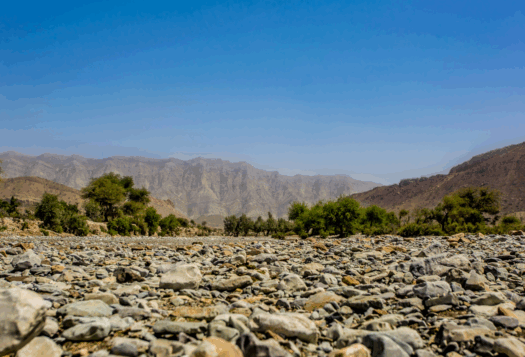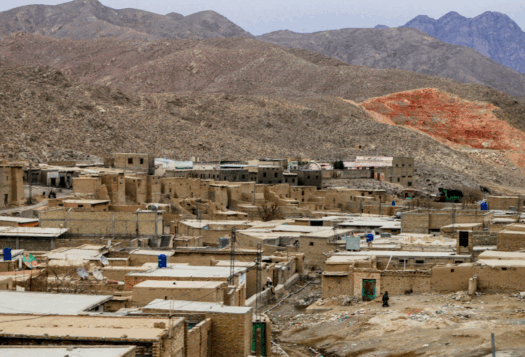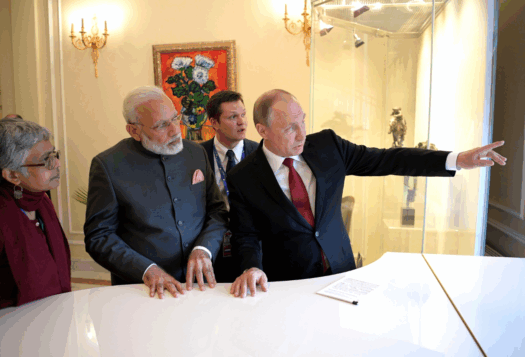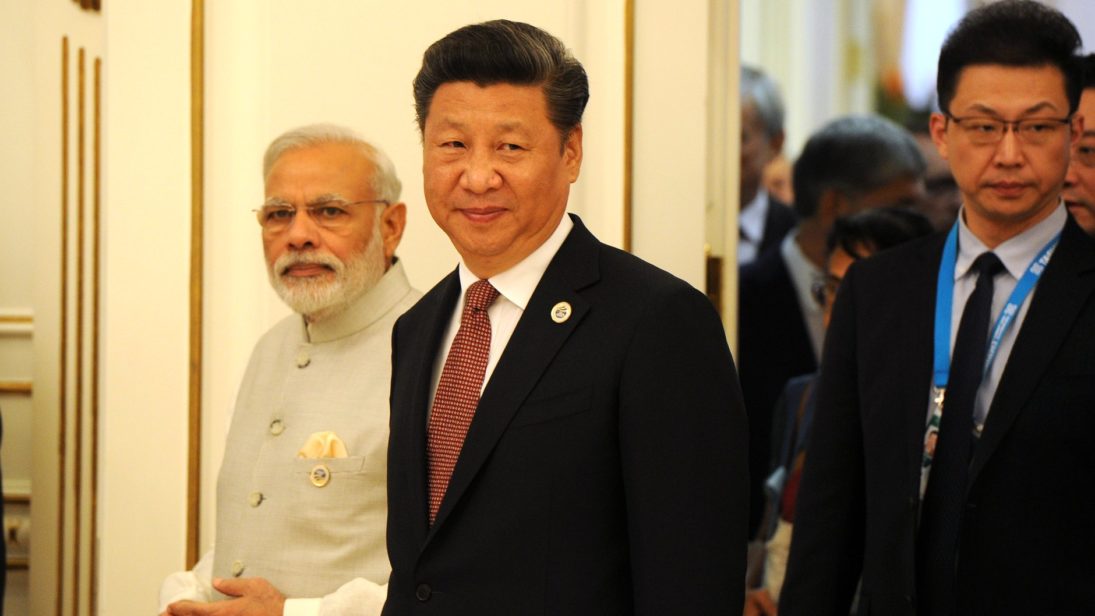
From enhancing capabilities for connectivity and security in the region to staring down the neighborhood bully to clearing out outdated ideological policy formulations, 2017 saw India under Prime Minister Narendra Modi take on a more self-assured and assertive approach–at home and abroad. And there is reason enough to expect that this trend will continue into 2018 as the ruling party continues to consolidate power in the run up to the 2019 general elections.
Doklam Standoff
When considering the events of this past year, the Doklam crisis emerges at the top of the list. The 73-day military standoff pitted India against China, and sparked fears that the world’s two most populous, nuclear-armed neighbors were on the brink of war. The border dispute between the two has quietly festered for many decades, but aggressive border intrusions in recent years have threatened that trend of peace. It is unclear if these intrusions will compel both parties to resolve the dispute sooner rather than later, but for now it adds to a growing list of irritants in their relationship.
Though the standoff was resolved through diplomacy this time, there is ample reason to worry that such conflagrations may disrupt regional stability. In fact, on December 1, the Chinese military hinted that it will not withdraw its troops from the Doklam region as is customary during the harsh winter months, but instead maintain a sizeable presence. Currently, India enjoys a tactical military advantage—its Doka La post oversees the area of the actual standoff. However, with China beefing up its own presence in the region—which borders the vital sliver of land that connects India’s northeastern states with the rest of the country—New Delhi cannot afford to be complacent.
The crisis will, of course, impact the ongoing border negotiations between India and China, but it also tests India’s abilities as a regional security provider. Technically, Doklam is disputed between Bhutan and China, and India intervened to protect Bhutanese sovereignty. For now, whether India can or will be a counter-balance to China is an open question, but in this context, recent efforts to revive the decade-old idea of a security alliance among India, Japan, Australia, and the United States to bring stability to the Indo-Pacific region is of significant interest.
India and the Quad
The first official-level discussion on the Quad since 2007 took place in November, on the sidelines of the Association of Southeast Asia Nations (ASEAN) and East Asia summits in Manila, and though the grouping is still in an embryonic stage, it is worth noting that the Malabar naval exercise between India, the United States and Japan is growing bigger and more complex with every passing year. Of course, India has sought to make clear that the grouping isn’t directed at any one country but Delhi’s participation in the Quad meeting does indicate a more confident and assertive foreign policy vision–and a willingness to work more closely with friends—both old (Japan) and new (the United States, Australia). Notably, this also ties in nicely with the United States’ Asia policy under Trump, which envisages a wider role for India in the Indo-Pacific as well as in South Asia. Herein, the inauguration of two new India-Afghanistan trade routes that bypass Pakistan indicate how the many pieces of the geopolitical puzzle fit together.
India-Israel Ties
India’s assertive and confident foreign policy approach was also evident in Modi’s trip to Israel in July, the first-ever official visit to the Jewish state by an Indian prime minister. Though relations between India and Israel have grown significantly since the two countries established diplomatic ties in 1992, a pre-Modi India was reluctant to acknowledge the full potential and scope of the partnership, fearing that this would upset Arab states. Since 2014, the Modi government, however, has sought to dismiss these outdated policy formulations: de-hyphenating India’s Israel and Arab state policies, and leveraging the India-Israel bilateral for all that it has to offer—in sectors as diverse as defense, agriculture, and water technology.
Developments in Kashmir
In Kashmir, the state’s reinvigorated anti-militancy campaign, “Operation All Out,” has eliminated nearly 200 militants as of November 19. The Army has said that there will be no let up in its efforts during the winter season, so this is an ongoing operation and, therefore, it’s too early to assess its impact at the political level. For example, in October, the central government appointed former Intelligence Bureau (IB) director Dineshwar Sharma as India’s interlocutor to Jammu and Kashmir, but he hasn’t fared any better than his predecessors as of yet.
However, on the ground, it seems that the government has been able to turn things around after the unrest in mid-2016 that continued well into 2017 following the killing of militant leader Burhan Wani. The turning point came with the Lashkar-e-Taiba terror attack on Hindu pilgrims in south Kashmir—the only major attack on civilians in the country in 2017 but the deadliest targeting Amarnath yatris since 2000. The July attack galvanized “Operation All Out” and has since sought to hollow out the ranks of the anti-militancy operation. Expectedly, there have been reprisal attacks on police and military positions, but for now, it is the government that seems to have the upper hand.
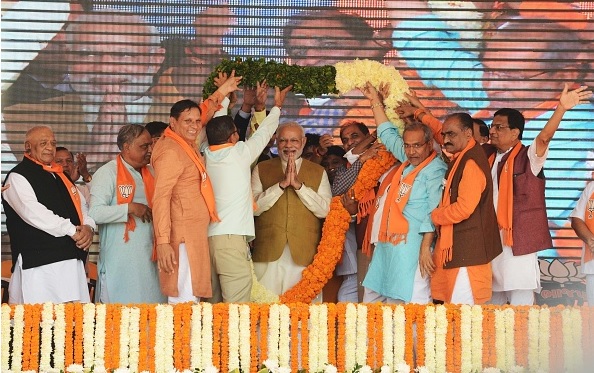
Economic Reforms
Another example of assertive policymaking this year has been the rollout of the Goods and Services Tax. This is the single largest tax reform in the country since independence. It unifies India’s two-trillion-dollar economy and effectively converts it into a single market. Also a big win for cooperative federalism, this tax reform has been in the works for about two decades but is still riddled with flaws and loopholes. This was perhaps only to be expected, nevertheless, it will be interesting to see if the Modi administration continues with its reform agenda–especially as it enters the last phase of its five-year tenure, and all political parties prepare to go into election mode next year.
State Elections and the BJP
In this context, the state elections of 2017–which arguably serve as a sort of mid-term assessment of the ruling party–provide some valuable inputs. Five states went to the polls in the first half of the year–Uttar Pradesh, Punjab, Uttarakhand, Goa, and Manipur. While the Congress managed a rare victory in Punjab, the BJP won Uttar Pradesh and managed to form a government in all the other states as well. The BJP also achieved two electoral triumphs in Himachal Pradesh, a Congress-BJP battleground state, and Gujarat, a BJP stronghold, in December. During the year, the Indian Electoral College voted BJP leaders Ramnath Kovind and Venkaiah Naidu as President and Vice President respectively. The BJP also increased its strength in the Upper House where, for the first time, it emerged as the single largest party–by mid-2018, it is expected to have a majority, paving the way for easy passage of just about any legislative item.
Conclusion
The ruling coalition has been consolidating power at all levels of the polity and will go into the New Year on a high note. Whether it uses that momentum to push for reform, growth, and development remains to be seen.
Editor’s note: This is the fourth piece in our 2017: Year in Review series. In this six-part series, our contributors assess the most significant domestic and foreign policy developments in Afghanistan, Pakistan, Bangladesh, India, Sri Lanka, and Nepal in 2017 and how these developments will impact the countries and the region in 2018. Read the entire series here.
Click here to read this article in Hindi
***
Image 1: The Kremlin
Image 2: Sam Panthaky/AFP via Getty Images
